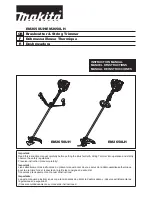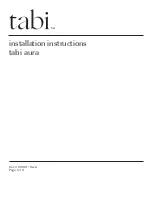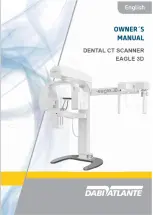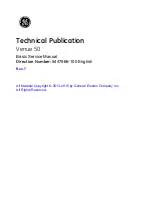
2. Flush ECD with water under line pressure (typically 30 to 75 psi). Discard the drain or breather if the
foreign material is not removed.
NOTE:
Different styles and sizes of ECD fittings will allow different amounts of water or air to pass
through. To determine if a breather or drain has been cleaned, compare the volume or water passing
through a clean, unused breather or drain of the same style and size.
3. After cleaning, attach the breather or drain to a pressurized dry air supply line in a similar manner to that
used with the water line in Step 1.
4. Blow the fitting dry, inside and out, with the dry air.
PERIODIC TESTING
Article 700 of the National Electrical Code states, “Systems shall be tested periodically on a schedule
acceptable to the authority having jurisdiction to assure their maintenance in proper operating condition.” It
also states, “A written record shall be kept of such tests and maintenance.”
In the absence of periodic testing requirements by a local authority, the following recommendations from the
NFPA 101 (2003) Life Safety Code
®
are strongly recommended:
1.
Monthly
: Momentarily operate push-to-test switch. Observe that emergency lighting fixtures are on full
brightness for the entire test cycle. Record the test on the Maintenance Record Card (provided on page
5).
2.
Annually:
Shut off AC power at the distribution panel. Verify that the emergency lighting fixtures remain
“ON” for a minimum of 1
1
⁄
2
hours.
NOTE:
Leave the battery disconnect switch “ON” during this test so that battery circuit is not
interrupted. We suggest that this test be continued until the power supply automatically shuts the
emergency light(s) off. This will help maintain full battery capacity.
Record the test on the Maintenance Record Card.
Allow 72 hours charging time before depending on the battery to operate at full capacity.
Failure to function properly in either test may indicate the need for battery or lamp replacement.
BATTERY REPLACEMENT
1.
Turn battery disconnect switch to “OFF” and lock-out the switch.
2. Loosen (do not remove) the captive cover screws (6) of the N2LPS SS power supply housing and carefully
place the cover aside for reassembly later.
3.
Disconnect the wire nut attaching black negative lead from battery to the battery plug.
4.
Disconnect the wire nut attaching red positive lead from battery to battery disconnect switch, taking care
not to touch the ground.
5.
Remove the four (4) screws that fasten the battery hold-down bracket to the mounting plate. Remove
battery. Retain hardware for use with replacement battery.
6.
Reinstall new battery using hold-down bracket and four (4) screws previously removed.
7.
Reconnect black and red battery conductors using wire nuts.
8.
Close cover and torque all cover (6) screws to 21-25 in.-lbs.
9.
Unlock designated disconnect switch to “ON” position. You may lock switch in “ON” position to prevent
unauthorized persons from turning system “OFF.”
10. Test replacement battery following Step 3 of Section C, “Complete Installation.”
IF 1630 • 01/13
Copyright © 2013, Cooper Industries, Inc.
Page 3
C. COMPLETE INSTALLATION
1.
Install CID101 corrosion inhibitor device (supplied in plastic envelope with instruction sheet).
Recommended location is on the inside surface of the top of the enclosure near the right side fixture
stem. Refer to CID101 instruction for installation.
2.
Close cover and torque all cover (6) screws to 21-25 in.-lbs.
3.
Test emergency lighting system for proper operation (see Table 1 on page 1 for detail indication logic):
Turn on the AC power and observe:
• Indicating light marked “ON” should be operating
• Momentarily press the push-to-test button and observe - emergency lights should be operating
NOTE:
If emergency lights do not operate initially, allow battery to charge for at least 15 minutes or
more, then repeat the test procedure.
4. Allow 72 hours charge time before depending on battery to operate at full capacity.
NOTE:
Lock in ON position to prevent unauthorized persons from turning system OFF.
INSPECTION OF BREATHER/DRAIN
The breather/drain is installed to provide ventilation to minimize condensation and also allow liquids to
drain out. Perform visual and mechanical inspections on a regular basis. Frequency should be determined
by the environmental conditions. However, it is recommended that checks should be made at least once per
year.
1. Remove drain or breather and replace it with either a plug or clean drain or breather.
2. Clean breather/drain by following “Flush-Cleaning” instructions.
FLUSH-CLEANING
Flush-Cleaning may be required by the user’s periodic maintenance program or when a drain or breather
becomes clogged with foreign material.
1. Attach drain or breather to a clean water line with threaded end facing upstream (see Figure 4).
WARNING
To avoid electrical shock, use fixture only on systems with an equipment grounding conductor.
WARNING
To avoid potential explosion, do not short circuit the battery or connector terminals.
To avoid explosion:
1. Exercise care in handing cells/batteries in order to prevent shorting of the cell with conductive
materials such as rings, bracelets, and keys. The cell or conductor may overheat and cause burns.
2. Do not dispose of the cell/battery in open flame; cells may burst.
3. Do not open or mutilate cell/battery. Opened cells may release corrosive electrolytes which may
have harmful effects on the skin and eyes, and may be toxic if ingested.
WARNING
NOTE
Unit needs to charge for 72 hours before conducting any tests. Do not disconnect AC power until
unit is fully charged.
CAUTION
To minimize condensation, never disassemble breather or drain assemblies.
CAUTION
To avoid damaging breather/drain, do not force handle or cap during inspection.
Figure 4























